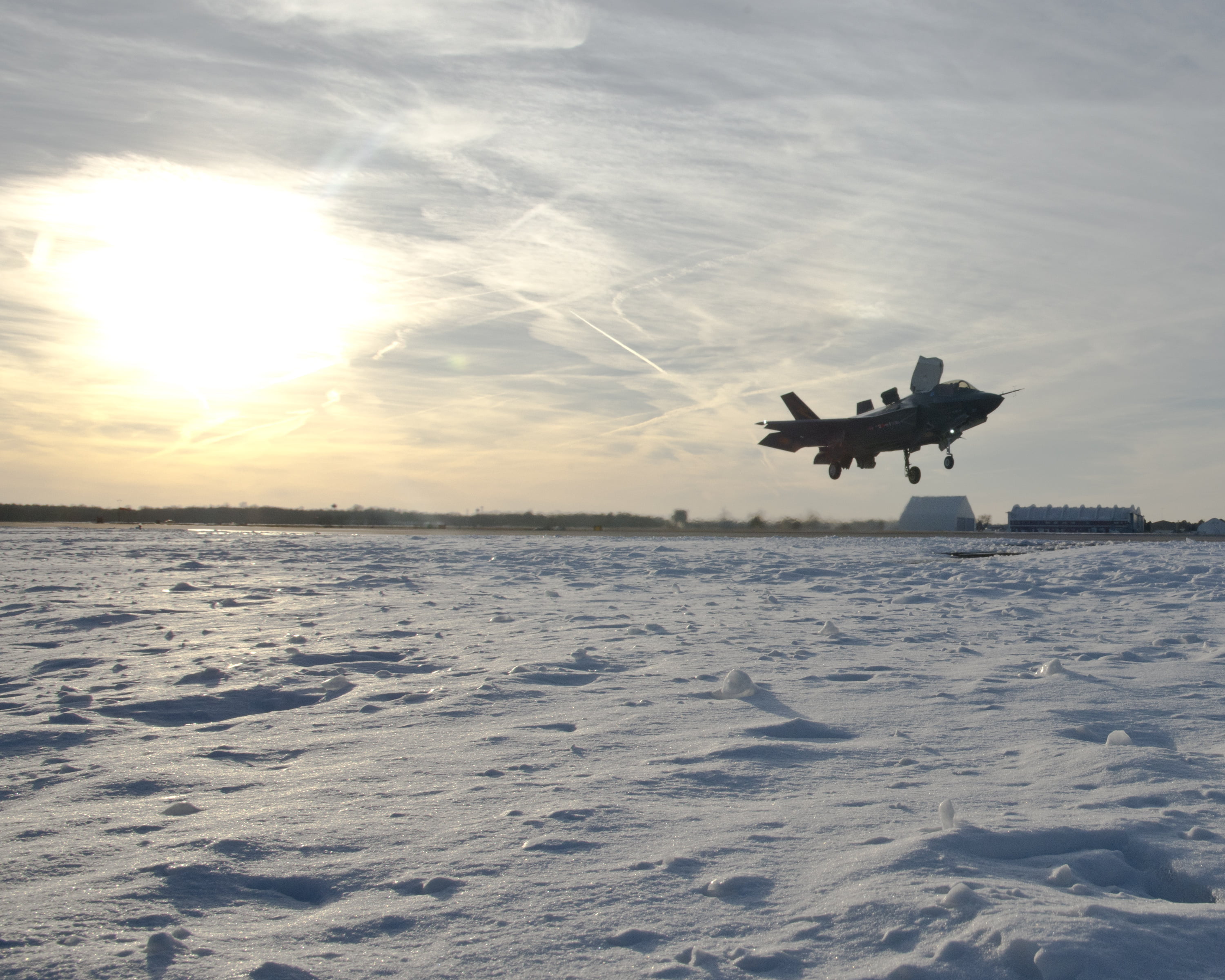2015-03-13 By Robbin Laird
I have had the opportunity to track the evolution of the Osprey from seeing a small number of planes on the tarmac at New River to watching it mature and revolutionize the assault force.
It is clear that the F-35B will have a similar trajectory with the USMC.
Watching that growth and development path has been facilitated over the years by meeting with, and talking with Art “Turbo” Tomassetti when he first came to Eglin AFB and now after the end of his distinguished Marine Corps career he is working the F-35B issues from the Lockheed Martin side of the fence.
When I first met “Turbo” in 2010 there were very few buildings at Eglin to support the F-35 program.
Now planes are coming out of the production chute and the services and the partners are working with the planes and preparing for their entry into service.
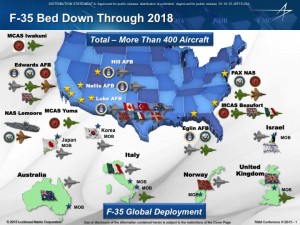
In this interview, “Turbo” provides an update on the F-35B preparing for entry into service and provides some perspectives on the way ahead, as he always done in our interviews.
Question: When I was at Fort Worth recently, you were traveling. I assume that with the Marines focused on the entry into service of the F-35B this year, you are making the tours at the key spots where the plane is coming to life and getting ready for IOC?
Tomassetti: That indeed is what I am doing.
My typical flow is I try to get to the places where we have the airplanes operating every month and each is for a different reason.
I visit to see how they’re doing on progressing to close out SDD at Pax River to Beaufort to check on Pilot training and to Yuma to see how they’re progressing on preparation for IOC and OT-1as they will be the predominant entity conducting that event on the USS Wasp in May.
OT-1 will be a team event with personnel from OT in Edwards and from VMFAT-501 from Beaufort supporting as well.
The key focus of OT-1 is verifying that we can take the airplanes, move in from a land home base, put them out at sea, operate them at sea, and bring them home, which is what the Marine Corps would do in most cases, should they be called upon to go support an activity somewhere on the globe.
I will be at Yuma next week and looking to find ways we can support them most effectively.
Question: There is a story out there which highlights that the Marines are drawing upon USAF maintainers in getting ready for USMC IOC.
To the unvarnished eye this is a negative comment, but does this not highlight one of the goals of the programs, namely cross service and cross partner maintenance approaches?

Tomassetti: It does.
As we talked about when I was at Eglin, a clear opportunity with a joint aircraft it is to have joint maintenance.
Commonality allows you to do things that you can’t do if you don’t have common airplanes.
The notion that every base is an isolated entity unto itself and that people will only have expertise to do their own thing is something we need to get past.
I think the world in the future is going to demand a lot more integration and cooperation than we’ve seen in the past in order to be successful.
That provides options as well. If you look at F-35 as a common global system, that’s much different than looking at it as an isolated system or one-off thing that has unique support requirements.
I think back to the days of Desert Storm where everybody came to play, but not everybody could play together because we didn’t have the interoperability that is built into this system from the ground up.
Question: A challenge of building a software upgradeable program is to understand how capable the initial planes actually are. They will progress over time, and in a real sense never be finished.
How capable do you see the initial F-35B to be deployed by the Marines for combat?
Tomassetti: I hear the same things and people say, “How can you go initial operational capability before you’re done developing the airplane?”
I agree with you we should really never be done developing airplane.
We should always be looking to improve it and that is the plan going forward.
We already talk about follow-on developments because we know technology’s going to change, tactics are going to change, the threat’s going to change.
We have to keep up with that.
The airplane never becomes static in terms of its growth.
Why would the Marine Corps declare IOC with something at this stage of the game?
I think you have to look at, if called upon to go someplace and do something. You are the person in charge. You would like to send your best assets forward.
Your best assets are those that can accomplish the mission and the ones that can keep your people safe doing the mission.
Look at what the Marine Corps has in its inventory as an example look at the airplane I grew up in, the Harrier. I went to Desert Storm in a Harrier that was a day-attack airplane.
It did not have systems to conduct night operations yet we conducted operations at night.
It is a subsonic airplane with a limited weapons envelope, but it got the job done because the people were well-trained.
The airplane was the best it could be at the time, and that’s what the Marine Corps had in its arsenal to do the job with.
Now the F-35B is in the Marine Corps’ arsenal and they look at the best platform to go do whatever the mission is.
I think today, the F35B has all of the attributes to excel in a number of mission areas and why would you not choose to send your best system out to accomplish the mission?
I think that’s where the Marine Corps is and that they realize that the airplane today is already getting to the point where it’s meeting or exceeding the capabilities of legacy airplanes.
In addition to that, knowing that you’re probably going to send the F35s with a mix of what you already have. Having the F35 out there with the legacy airplanes only makes the legacy airplanes better.
From the outset, the F-35 will have an additive effect in the battlespace and will enhance the lethality and survivability of the other air assets and of the ground force as well.
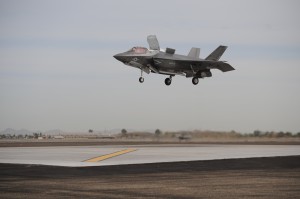
Question: Another aspect, which is confusing, is the notion of IOC itself. IOC is a beginning point; not a statement of full maturity.
How should one interpret IOC?
Tomassetti: I try to tell people that if you go to Yuma on the day before that declaration and look around the squadron and look around the Flightline and go the day after the declaration, and look around the squadron and look around Flightline, I don’t think you’ll see anything different.
But what does change is the status of the squadron.
That squadron knows that they can be called upon to go somewhere.
That squadron commander knows his squadron is conducting their training when they’re evaluating their readiness, when they’re doing their inspections, when they’re participating at exercises, whatever the case may be. He’s looking at it through the lens of my folks need to be able to, if called upon, go someplace, and be effective and to meet the mission objectives.
That puts your mindset and how you approach what you do day-to-day in a little different prospect than, “Hey, I’m still just in this developing, maturing, on-my-way to something phase where my flying is mostly just focused on expanding my knowledge on the airplane.”
Now the squadron commander and his team are focused on going somewhere and doing something effective in support of the deployed force.
It is not about tests; it is about mission success.
Question: I want to return to the challenge of understanding software upgradeability. There is a constant problem of understanding that blocks of software are simply bundles of added capabilities; they are not the definer, a level of maturity necessary to use the airplane.
How do you view the growth process after IOC?
Tomassetti: When you have the airplane in hand and actually start using it, you’re going to do what you do with every other system, once you have it; you learn how to maximize what it can do.
It may or may not be what you envisioned in the initial proposition. It may or not be what you envisioned during development, but when you get the airplane and you’re operating it, you will find the way to get the most out of what that airplane can do.
The other key is that now as we put to the airplane and the ALIS 2.0 version of maintenance in the hands of the squadron in Yuma, they now become part of the process. I’m not saying that they haven’t been, but they’re now in the realm of we’re also now being able to contribute to the next iteration of the airplane.
They will find things out.
They will be part of the solution to make the airplane better as we move forward.
That’s a good thing, because while the Developmental Test team does their piece and a lot of what I just talked about is the things we would normally expect, the Operational Test team to do, because of where we are and how the program’s been set up, you now also have fleet squadrons that can contribute to that knowledge base and maturation process as well.
We just need to be able to collect all that information, make sense of it, and then figure out how to make the airplane better based on all that experience.
If you looked at the mission of the airplane and whether you talk about it in air-to-air or in an air-to-ground sense, it has to be able to locate, identify and prosecute targets. Today, that’s not necessarily achieved by making the wings bigger or making the tail different or changing the configuration or the look of the airplane.
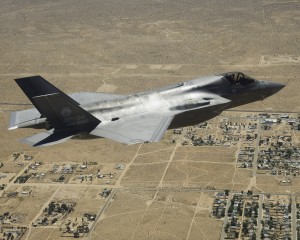
It’s done by changing the systems, the inside of the airplane, making the processors faster so that they can go through that cycle faster, which makes enables it to find and execute against targets more rapidly and more effectively.
And this true not just for the F-35, but for the information it can deliver to the other aircraft it operates with to make them more effective.
Identifying the target is probably the real key here, is not only tell me that what’s out in front of me: is it a tank , is it a truck , an airplane or a ship but tell me what kind of tank it is. Tell me how fast it’s moving or how long it’s been parked where it is or if it’s getting ready to fire. That kind of information processing is going to be done pretty much through software, not through bolting something on the airplane or changing the shape of something on the airplane.
What you’re going to do now is use and control the electromagnetic spectrum by changing boxes and software inside the airplane that no one will ever see from the outside.
You’re right. It’s a little bit different because folks in the past when you change airplanes, they’re used to seeing that change.
They see that new pod or new bump or that new antenna or it got bigger. It has more pylons or those kinds of things.
I don’t think you’re going to see the same thing in the lifecycle of F-35.
It’s going to keep getting better but as you described, it’s likely going to look the same from the outside.
Question: We put in our latest Defense News commentary the simple proposition that the F-35 is coming at a point for the services and the partners where they are looking at its contribution to the transformation of their forces, not simply adding a silver bullet to the holster.
How do you view the transformation process?
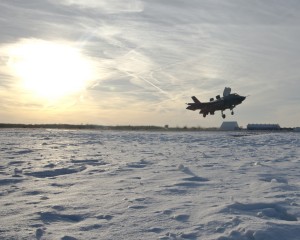
Tomassetti: It is twofold.
On the one hand, it is about operating legacy aircraft with the F-35 and learning how to make these legacy aircraft better and to use them differently as the services learn what the F-35 does and how it does it.
For the Marines, this means that the Av-8Bs and F/A-18s, which remain in the force, will not be used the same way they have been used before. You have to figure out how to integrate them. Understanding how do they operate differently and more effectively with the F-35s, and how do the F-35s draw upon the legacy aircraft to gain more significant effects from operating together.
On the other hand, the F-35 is simply not like a legacy aircraft. We need to learn how to operate them together to learn their special effects when so doing for joint F-35 operations, or anticipating the day when we have an all F-35 fleet.
The pilot and maintainer evolution will be critical to this as new pilots and maintainers enter the force now with no history/habits from legacy aircraft.
All of us old folks carry a lot of baggage from wherever we came from. It’s not a good thing or a bad thing. It’s just reality.
We’ve carried that with us. It shapes how we think about things. We’re going to bring a breed of folks into the airplane shortly that is going to have a fresh perspective, that is a different generation which grew up with X-Box 1 and Play Station not Pong and Space Invaders. They’re used to processing a lot of information.
They’re used to speed in information.
They are going to find out ways to do things with this airplane that we haven’t even thought of.
We have these big milestones we’ve got to track through to be successful in that but what those youngsters are going to bring to the table when they get their hands on this airplane and start putting their new perspective on it I think is going to be dramatically different over time.
For past interviews with Art “Turbo” Tomassetti see the following:
https://sldinfo.com/looking-back-on-the-career-of-turbo-tomassetti/
https://sldinfo.com/the-f-35-in-history-a-day-for-col-tomassetti-to-remember/
https://sldinfo.com/the-ready-room-as-the-learning-center-for-air-combat/
https://sldinfo.com/an-update-on-the-f-35-integrated-training-center-at-eglin-afb/
https://sldinfo.com/an-update-from-eglin-on-the-arrival-of-the-f-35/
https://sldinfo.com/an-update-on-the-eglin-f-35-training-facility/


